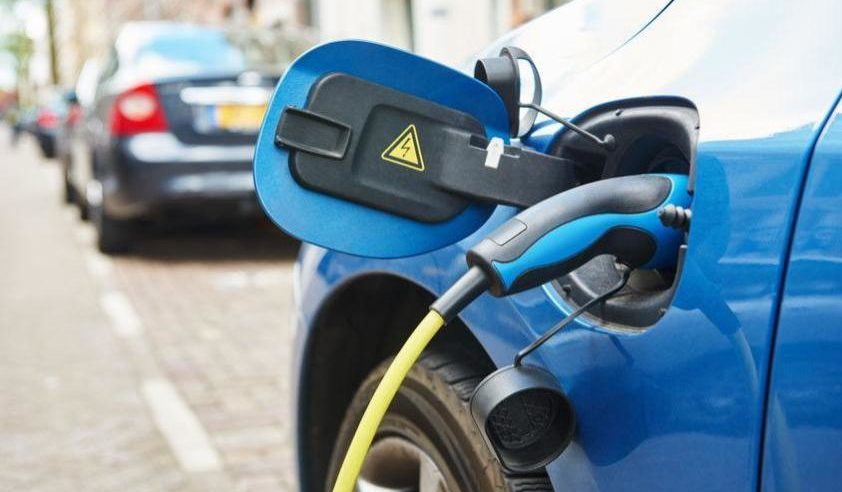SHARE
Electric Car Charger: The need for Control Strategies
The future of mobility
The growing concern surrounding the environmental impact of traditional cars and our excessive reliance on fossil fuels creates the need for alternative vehicles. In the past few years, the electric car has positioned itself as the most interesting option. In fact, the sales percentage of electric vehicles (EV) has increased by around 60% every year since 2014, mainly due to the immense amount of EV sales in China (over 1 million units in 2018[1]). A number of governments have manifested their interest in making this technology more accessible. One just has to look at the laws passed by Jerry Brown, Governor of California, in January 2018: their goal is to achieve 100% emission-free vehicles by 2030[2]. Norway is another example, global leader in plug-in electric vehicles (almost 50% of the new vehicle sales since 2018[3] have been PEVs), and so is Spain, where sales of EVs have steadily increased for the past 5 years, partially thanks to the VEA plan[4]. However, EVs still have to face a series of challenges in order to position themselves as a solid alternative to the petrol car because of the charging price and the autonomy and durability of the battery. Regarding battery autonomy, there is a significant number of research studies and prototypes focused on its improvement. To this end, diverse technologies are being used, such as Li-S batteries with graphene sandwich[5], the incorporation of Ni-Sn electrodes to existing ion-lithium batteries[6], or even the use of organic materials in Li-O2 batteries[7]. Although in theory all of these technologies are very attractive, their reliance on nanomaterials will surely delay their market entry because they are difficult to mass-produce.The need for a smart electric car charger
Regarding the electric vehicle, even though the battery is one of the elements with greater room for improvement, there is another element whose potential remains untapped and whose impact may be more immediate: the charger. Nowadays, the electric car charger works by plugging them to the network and supplying a greater amount of energy possible at that moment. This strategy may be ineffective for different reasons. On one hand, the efficiency of AC/DC converters varies according to the power level to convert. On the other hand, the durability of a battery is closely linked to the current profile used to charge it, an aspect rarely considered when using this charging strategy. Finally, in the case of electric vehicle owners who charge the vehicle at home, the volatility of the electricity price throughout the day must be considered, which can affect the final price, depending on the moment the car is charging and how charged we want it to be. With the growing market presence of IoT technologies, an industry that generated USD 190 billion in 2018 and is expected to increase by 13% annually[8], there is a real possibility to create smart electric car chargers that may be remotely or locally controlled in order to optimize charging prices, their efficiency, and the durability of the battery.What has been done so far
Within the academic field, there are already a number of possibilities to control the charging of electric vehicles that generally applies to network operators or owners of large vehicle fleets. These techniques are very diverse, from quadratic programming[9], Direct Load Control (DLC)[10], and even linear programming [11]. However promising these control strategies might be, most of them are focused on centralized control in order to optimize parameters like network stability or loss reduction, which concern network operators more than final users. This centralized control requires two things: a central operator who decides the charging profiles, and the consumers’ blessing on another agent making the decisions for them. According to research on electric vehicle owners[12], this will not always be possible. As a response to this, some local control strategies have been developed to minimize costs for the user[13][14], but they have not raised as much interest as their centralized counterparts. Besides, very few local strategies consider parameters other than the charging price, like maybe the electric car charger’s efficiency or the impact of the charging profile on the battery life. Nevertheless, there are some companies in the market that already opt for this new way of charging vehicles. There are, for instance, companies like Intellicharge, UK, or Voltio, from Chile. Both companies offer solutions for charging points that go beyond the installation of the device. Broadly speaking, they offer smart charging points that help the implementation of charging control strategies to minimize the charging costs. As for Intellicharge, they also offer the possibility to join a British Demand Side Management (DSM) program, by which the consumer is entitled to additional compensation. These two companies provide, in principle, more local control strategies.Future prospects
The energy transition from traditional grids to smart grids is coming up soon, and so it becomes more evident that EV users will play a key role in network stability. At the same time, electric vehicle users will probably prefer to use control strategies to charge their cars at the lowest possible cost while keeping the EV in perfect conditions. The addition of Vehicle-to-Grid (V2G) technology in EVs will enable both energy absorption from the network and the injection of energy. This will flatten the system’s demand curve and result in great improvements in operation. In order for these technologies to harmoniously work, it is not possible to continue using the present uncontrolled chargers. Therefore, the need for control strategies for the electric car charger is undeniable.Let us know your ideas for improving the electric car charger and explore what ennomotive has to offer.
Join our engineering community here
